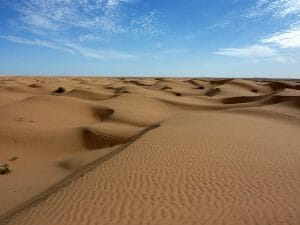A desert is a dry and barren ecological region that can be in either hot or cold climates. Examples of hot deserts are the Sahara Desert in Northern Africa and the Arabian Desert in the Middle East. The Antarctic desert which is the largest in the world is an example of a cold desert.
Desert Biotic Factors
Animals
Xerocles is the scientific term for animals that have adapted to live in the desert. Some animals that live there are the sandgrouse, camels, the oryx, the dik-dik, Grant’s gazelle, Jerboas, desert rats, coyotes, foxes, snakes, the emperor penguin, lizards, Couch’s spadefoot toad and the desert rain frog.
Plants
Desert plants include cacti such as the prickly pear and saguaro, the saltbush, the mesquite tree, grasses, lichens and shrubs.
Insects
Arthropods have adapted particularly well to desert climates. Typical species found in these regions are beetles, ants, termites, scorpions, spiders, flies, millipedes, locusts and desert shrimp.

References
- Desert. (n.d.). In Wikipedia. Retrieved July 19, 2017 from https://en.wikipedia.org/wiki/Desert
